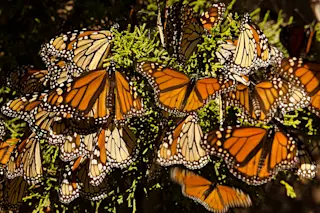Until recently, monarchs have mostly been at Mother Nature’s mercy—contending with disease, weather fluctuations, and heavy predation in the wild.
Lately, however, the efforts of a well-meaning public to bring monarch eggs and larvae indoors to raise to maturity, or to purchase large numbers of farmed monarchs for release into the wild, may be making life even more difficult for the beleaguered butterfly. Experts suggest such activities expose monarchs to disease, interfere with its genetic diversity, and stymie scientists’ efforts to track its migration patterns. Sadly, this isn’t the first time our good intentions toward monarchs have gone bad.
“People know monarchs have been in trouble. Their numbers in Mexico have been low for the past several years,” says Sonia Altizer, director of Project Monarch Health and a professor at the Odum School of Ecology at the University of Georgia. Scientists have observed declines by as much as 97 percent ...














